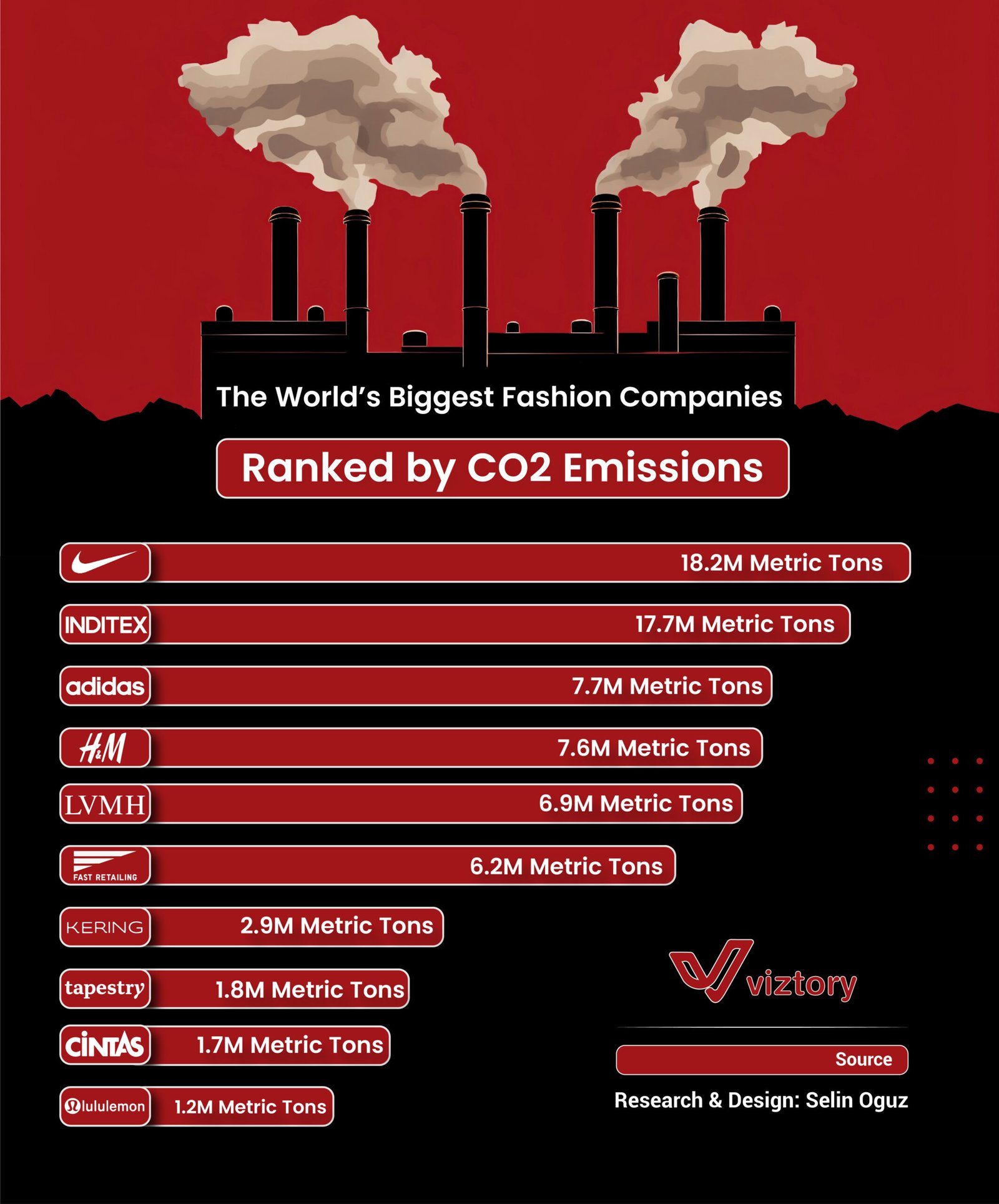The World’s Biggest Fashion Companies
-
Sep, Thu, 2024
The World’s Biggest Fashion Companies Ranked by CO2 Emissions
This image showcases the ranking of some of the largest fashion companies in the world based on their carbon dioxide (CO2) emissions, revealing the environmental impact of the fashion industry. The chart reflects the contribution of these companies to global carbon emissions, a critical factor in climate change. With the world increasingly aware of sustainability issues, the intersection of such emissions with sectors like healthcare becomes more evident, as environmental health directly affects human well-being.
CO2 Emissions in the Fashion Industry
The fashion industry has long been criticized for its environmental impact, particularly in terms of waste generation and CO2 emissions. The image lists the top companies responsible for significant emissions, including Nike (18.2 million metric tons), Inditex (17.7 million metric tons), Adidas (7.7 million metric tons), and H&M (7.6 million metric tons). These companies, which dominate the global fashion landscape, rely heavily on energy-intensive manufacturing processes, global transportation networks, and often unsustainable raw materials, contributing heavily to CO2 emissions.
As consumers demand more products, the fast fashion model promotes quick production cycles, leading to excessive use of resources and increased emissions. Brands like Nike and Inditex (the parent company of Zara) are emblematic of this trend, driving massive production volumes that come with environmental costs.
The Connection Between Environmental Health and Healthcare
The high CO2 emissions generated by the fashion industry have a direct impact on environmental health, which, in turn, affects human health. Increased carbon emissions contribute to climate change, leading to extreme weather events, rising temperatures, and deteriorating air quality. These environmental factors are directly linked to a range of health issues, including respiratory diseases, heat-related illnesses, and the spread of infectious diseases due to changing ecosystems.
Air pollution, a byproduct of CO2 emissions, has been identified as a leading cause of chronic respiratory conditions like asthma and lung disease. Additionally, the healthcare sector is burdened with managing the health consequences of these environmental changes, often leading to increased medical costs and strained healthcare systems. As the climate worsens, healthcare systems may struggle to keep up with the rise in environmentally-induced health issues, particularly in vulnerable populations.
Sustainability in Fashion and Healthcare
While the healthcare sector is concerned with treating illnesses, there is a growing realization that addressing the root causes of health issues—such as environmental degradation—can significantly reduce the healthcare burden. Fashion companies have begun to acknowledge their role in this dynamic, with some implementing sustainability initiatives aimed at reducing their carbon footprint. For example, brands are increasingly turning to renewable energy in their supply chains, using recycled materials, and promoting more sustainable production methods.
However, the transition toward sustainability in the fashion industry is slow, as evidenced by the high CO2 emissions from leading brands. If the industry can further embrace green technologies and reduce emissions, the positive ripple effects will be felt across other sectors, including healthcare.
Conclusion
The fashion industry’s contribution to CO2 emissions is a critical environmental issue that has far-reaching consequences for global health. Companies like Nike, Inditex, and Adidas are major players in this ecosystem, driving unsustainable levels of carbon emissions through their production practices. The healthcare sector, already burdened by the effects of environmental degradation, stands to benefit if the fashion industry makes a meaningful shift toward sustainability. By reducing emissions and adopting greener production methods, the fashion industry can play a significant role in improving environmental health and, by extension, human health outcomes across the globe.

